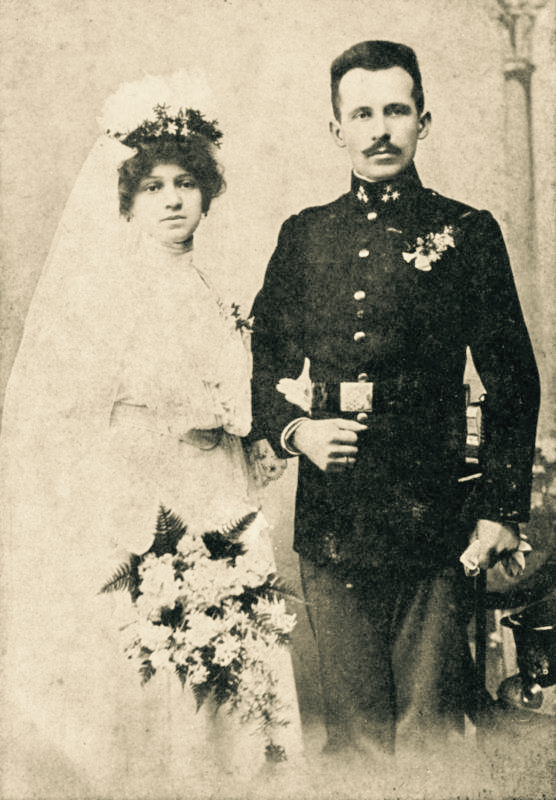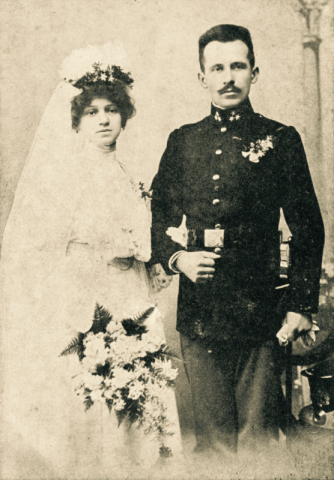The unity attained in becoming “two-in-one-flesh” in marriage is grounded in the order of creation (Gen 1:27; 2:24), persists through the regime of sin, and it is affirmed and simultaneously renewed through the redemptive sacrament of marriage. I developed this point in an earlier column. But now I want to underscore that real bodily oneness, a one-flesh union between a man and a woman, actualizes marital unity.
Agreeing with Pope Francis’s critique of “gender ideology,” Cardinal Gerhard Müller, head of the Congregation of the Doctrine of the Faith, recently stated that gender ideology claims, “that man’s identity does not depend on nature, with a body that is limited to a masculine or feminine sexuality.” He adds, “There is an evident dualism behind all this: the body loses its significance vis-à-vis its own identity.” (The Cardinal Müller Report)
Contrary to this anthropological dualism, the Catholic tradition affirms that the body is intrinsic to selfhood, the human person is, bodily. This affirmation is rooted in the Church’s teaching on the soul/body unity of the human person. (Catechism of the Catholic Church 362-368) As John Paul says, “In fact, body and soul are inseparable: in the willing agent and in the deliberate act they stand or fall together.” (Veritatis Splendor 49) Therefore, we can easily understand why separating “the moral act from the bodily dimensions of its exercise is contrary to the teaching of Scripture and Tradition.”
This teaching is explicitly embraced by Benedict XVI (e.g., Address to the Roman Curia, December 21, 2012) and by Pope Francis (particularly in Amoris Laetitia 56, 74-75 and Laudato Si’ 155).

Elsewhere, John Paul explains that the body is intrinsic to self-identity: “Man is a subject not only by his self-consciousness and by self-determination, but also based on his own body. The structure of this body is such that it permits him to be the author of genuinely human activity. In this activity, the body expresses the person.” (Man and Woman He Created Them) The body is intrinsic to one’s own self. Not surprisingly, since the “human body shares in the dignity of the image of God.” (CCC 364)
Anthropological dualism has also led to the denial that the foundation of the form of love that is marriage is a bodily sexual union of man and woman as one flesh. But since the body is intrinsic to personhood, the nature of marriage is such that it requires sexual difference, the bodily-sexual act, as a foundational prerequisite, indeed, as also intrinsic to a one-flesh sacramental union.
In his Theology of the Body, John Paul II develops the sacramental importance of the bodily-sexual act as intrinsic to a one-flesh union.
The sacramental sign of marriage is constituted by the couple, by the “word” they exchange – “I take you as my wife/as my husband, and I promise to be faithful to you always, in joy and in sorrow, in sickness and in health, and to love you and honor you all the days of my life.” And in their reciprocal “fidelity,” they commit themselves to “living” a reality of grace. John Paul comments, “This reality (the copula conjugale), moreover, has been defined from the very beginning by institution of the Creator. ‘A man will leave his father and his mother and unite with his wife, and the two will be one flesh’.” (Gen. 2:24)
Why the sacrament of marriage presupposes sexual differentiation is made clear in the realization of what is meant by the “sacramental sign”: “The words [form] spoken by them would not of themselves constitute the sacramental sign if the human subjectivity of the engaged man and woman and at the same time the consciousness of the body linked with the masculinity and the femininity of the bride and the bridegroom did not correspond to them [matter].”
John Paul explains: “What determines it [the sacramental sign of marriage] is in some sense ‘the language of the body’, inasmuch as the man and the woman, who are to become one flesh by marriage, express in this sign the reciprocal gift of masculinity and femininity as the [creational] foundation of the conjugal union of the persons. The sign of the sacrament of Marriage is constituted by the fact that the words spoken by the new spouses take up again the same ‘language of the body’ as at the ‘beginning’ [from creation] and, at any rate, give it a concrete and unrepeatable expression. . . . In this way the perennial and ever new ‘language of the body’ is not only the ‘substratum’, but in some sense also the constitutive content of the communion of persons.” (Man and Woman He Created Them, 103.3.4.5).
The reality that corresponds to these words and which the sacramental sign signifies and produces specifies the content of this sacramental grace: “The spouses participate in it as spouses, together, as a couple, so that the first and immediate effect of marriage (res et sacramentum) is not supernatural grace itself, but the Christian conjugal bond, a typically Christian communion of two persons because it represents the mystery of Christ’s incarnation and the mystery of His covenant.” (Familiaris consortio §13).
Hence, this one-flesh union is not just posited by ecclesiastical law. Rather, Jesus calls us back to the law of creation (Mark 10:6-7) that grounds an inextricable nexus of permanence, twoness, and sexual differentiation for marriage. In particular, marriage is such that it requires sexual difference, the bodily-sexual act, as a foundational prerequisite, indeed, as intrinsic to a one flesh union of man and woman: “So then they are no longer two but one flesh.” (Mark 10:8)







